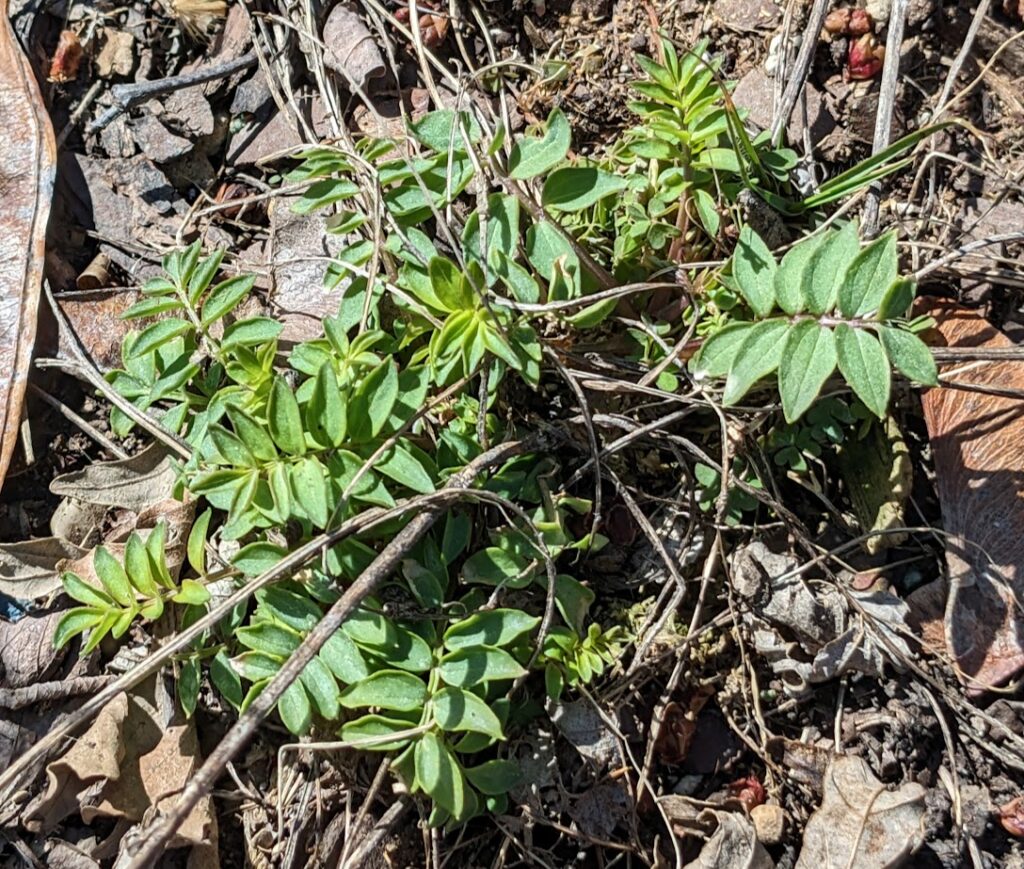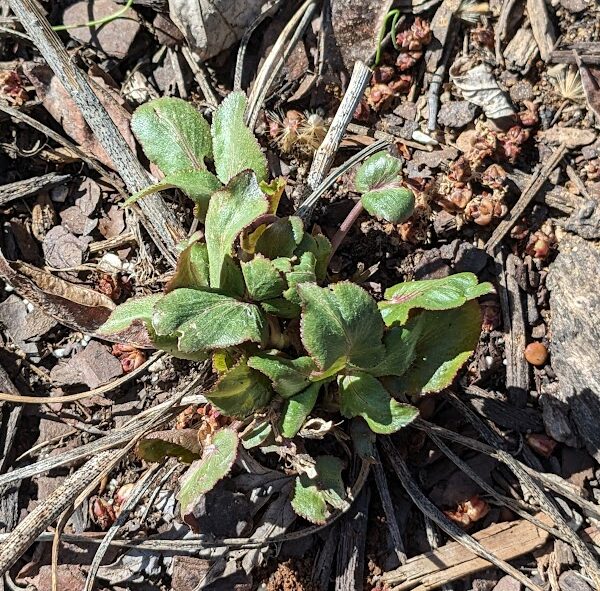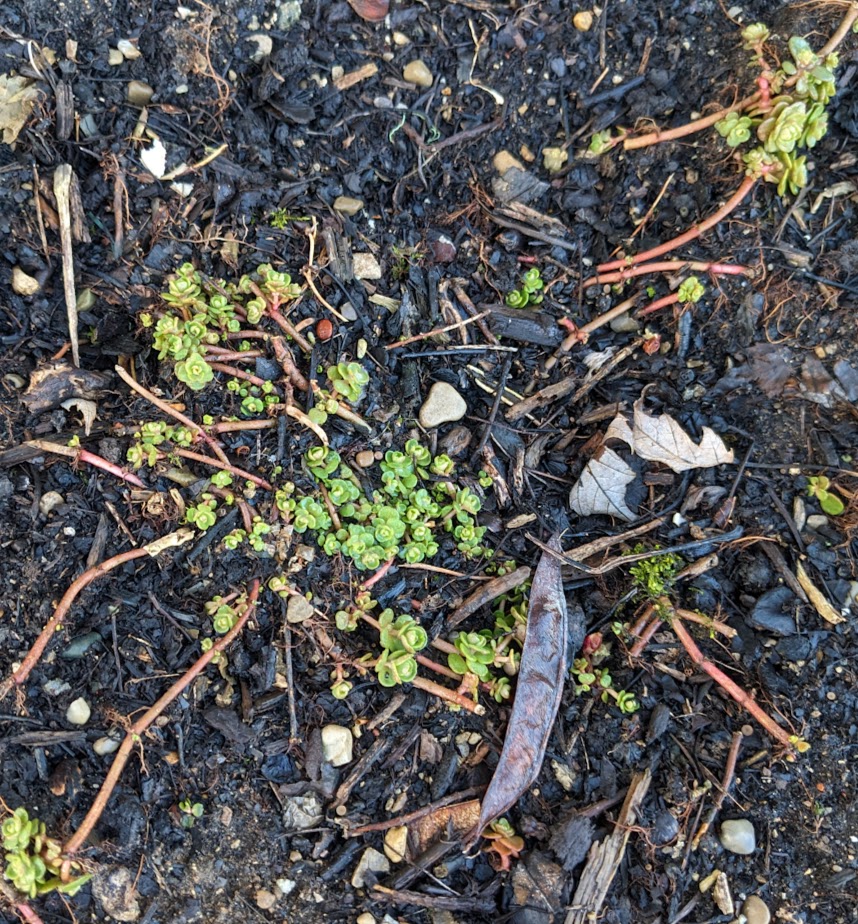In my garden it may be alternating between balmy spring weather and freezing cold temperatures and there’s still snow in the forecast for March, but numerous plants have nevertheless been emerging here in the Midwest (SW Ohio to be more specific).
These pictures were just taken in early March, showing that spring-flowering plants in my woodland part-shade pollinator garden are progressing nicely with their foliage.
Jacob’s Ladder (polemonium reptans) (below) – I love the fern-like leaves, which normally persist long into the year after the flowers fade making the plant a great choice for a groundcover since it will gradually spread.

Red Columbine (aquilequia canadensis) (below) – Beautiful tubular red flowers which are a hummingbird favorite appear on this versatile plant. Its foliage is a host for the Columbine Duskywing.

Heartleaf Golden Alexander (zizia aptera) – Another spring-flowering host plant, zizia supports the Black Swallowtail. This variety has larger heart-shaped leaves and the shallow yellow flowers are great for short-tongued bees.

At this stage of the year, local wildlife (deer, rabbits, even chipmunks) are also starting to find these emerging plants as a delicious meal.
I have some woodland stonecrop (sedum ternatum) which is normally evergreen but was chewed to the ground in late Fall by deer. Fortunately new growth is already emerging, and I’m hopeful I may still see its beautiful small white flowers later in the Spring.

Some summer-flowering plants have already emerged too. Purple Coneflower (echinacea purpurea) (below) is an early one to emerge in Spring, much earlier than other summer bloomers I have near it, like Orange Butterfly Weed (asclepias tuberosa) which typically pops up much later, a fact that confounded me the first season I grew it.

Coneflowers are another plant that are very popular with the rabbits, so newer plants that are yet to be established may need some protection. Once they make it a year or two, they’ll bounce right back from even more serious instances of animal “browsing,” and it’s good to know my garden provides food for wildlife in addition to beauty.
Leave a Reply